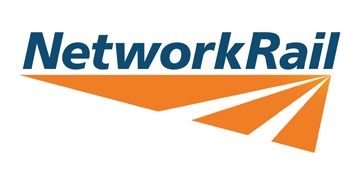

  |
6 December 2025 | Business Spotlight | Editorial Extra | News | Podcasts | About us | Home | 6 |
| Network Rail  Network Rail was created in 2001-2 as the successor to Railtrack, which had been a public company listed on the Stock Exchange since May 1996. When Railtrack was placed in Railway Administration in 2001, the decision was taken by the government to wind it up. Network Rail was set up in late 2001 as a 'not-for dividend' company limited by guarantee, run on commercial lines but without shareholders and reinvesting its profits in the railway. It took over from Railtrack plc in October 2002. ResponsibilitiesNetwork Rail is responsible for the maintenance and improvement of National Rail infrastructure in England, Scotland and Wales, with the exception of the Valley lines in South Wales. It is also in charge of train regulation (signalling) and allocating paths to train operators in partnership with the Office of Rail and Road, (formerly the Office of Rail Regulation). It manages 20 major stations, including all the London termini except Marylebone. The ORR monitors the performance of Network Rail and can levy penalties if it determines that NR has breached its operating licence. CustomersNetwork Rail's customers are the train and freight operating companies. Apart from 'departmental' workings in connection with maintenance, track surveying and related matters, it does not operate trains. RevenuesNetwork Rail revenue comes from several sources. The largest portion comes as an annual Direct Grant from the Department for Transport, and most of the rest in the form of track and station access charges paid by operators. Network Rail also receives income from property lettings, which include more than 500 retail units at the stations it manages as well as other tenants. Its budgets are divided into five-year ‘Control Periods’. The next will be CP7, which begins in April 2024. The funding available is determined by the rail regulator, the Office of Rail and Road. Network Rail has also created an international arm, Network Rail Consulting, which was launched in July 2012. SafetyAlthough its safety record is much better than in the Railtrack years (1994-2002), Network Rail has been under pressure from time to time because of engineering overruns and concern over its governance, structure and accountability, with frequent media publicity about the pay and bonuses of senior directors. Value for moneyThe McNulty Rail Value for Money study was published in May 2011. This made a number of recommendations designed to make NR more efficient and accountable and to reduce the costs of the wider rail industry. The McNulty recommendations received a mixed response, with some industry observers welcoming the potential efficiencies and savings but others, including the rail unions, expressing doubts about how much could really be achieved without compromising safety. In response to McNulty, NR announced plans to devolve its route management into regional units that would be more closely aligned with the train companies and act, as far as possible, as separate business units. The government, meanwhile, responded to McNulty in March 2012 by proposing a revised governance structure for Network Rail. Changes of statusNetwork Rail had been created to succeed a failed public limited company, Railtrack, but its status as an entity detached from government changed on 1 September 2014, when European statistical standards meant that it had to be redefined as a government body in the public sector. The most significant implication is that the company's debts have moved to the national balance sheet, while the Department for Transport has gained more control over remuneration and the management strategy. Several major reports were published in late 2015 and early 2016 which examined shortfalls in its budget for Control Period 5 (2014-2019). The new chairman Sir Peter Hendy (now Lord Hendy) replanned programmes for electrification and other upgrades, while Nicola Shaw explored new ways of raising money for Network Rail. However, she ruled out any reprivatisation on the Railtrack model. After further changes to increase the degree of devolution within the organisation, Network Rail’s territory is divided into five Regions, which in turn are mostly divided into several Routes. The exception is Scotland’s Railway, which only contains the Scotland Route. Network Rail is due to be replaced by Great British Railways. GBR is expected to inherit Network Rail’s regional structure.   |
For all Railnews advertising call David Longstaff on +44 (0)1438 281210 |
Contact us Copyright statement Site map Terms and Conditions |